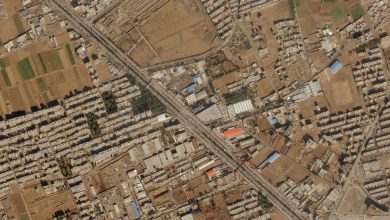Hurricane Forecast Worsens Amid High Ocean Temperatures

In places still scarred by the devastation of recent storms, the anxiety and apprehension that come with the arrival of hurricane season pushes many people to search for any sign — some based more on superstition than science — that might offer predictability in a time of year defined by uncertainty.
But this year, two of the more reliable (and meteorologically sound) indications have been sending conflicting signals, injecting volatility into hurricane season as even experts have expressed doubts about what to expect.
An El Niño pattern, like one expected to ramp up this season, typically impedes the formation of Atlantic hurricanes. Yet experts and communities along the Atlantic and Gulf Coasts have been unnerved by extremely warm waters this summer, with heightened sea surface temperatures posing a range of threats, including the ability to supercharge storms.
It is a confluence of factors that forecasters have rarely encountered. A slow start to El Niño and continued record ocean temperatures have led forecasters to raise the number of storms they expect this season, which started in June and runs through November.
In a news conference on Thursday, officials at the National Oceanic and Atmospheric Administration said the Atlantic hurricane season could produce 14 to 21 named tropical cyclones, including the five storms that have already formed. That is a slight increase from the agency’s original forecast issued in May of 12 to 17 tropical cyclones.
Forecasters now believe that from six to 11 (previously five to nine) of those storms could become hurricanes, meaning they would reach winds of at least 74 miles per hour. Those could include from two tofive (previously one to four) major hurricanes — Category 3 or higher — with winds of at least 111 m.p.h.
Last month, Colorado State University, which was the first research institution to compile a seasonal hurricane forecast, increased the expected number of named storms to 18 from 15, and the researcher overseeing the forecast acknowledged the possibility of updating it again, which has never been done this late in the season.
“Stuff just doesn’t feel right,” Phil Klotzbach, a Colorado State researcher, said. “There’s just a lot of kind of screwy things that we haven’t seen before.”
El Niño, a recurring climate pattern that occurs every few years, typically suppresses the formation of hurricanes in the Atlantic by creating a weather phenomenon called wind shear, in which wind speed and direction change with height in the atmosphere.
But for months, ocean temperatures have remained extraordinarily warm. They have climbed to nearly 100 degrees in some spots, destroying coral reefs, disrupting marine ecosystems and transforming Florida’s beach waters into something akin to a hot tub. Scientists believe the underlying influence of this alarming warming is human-driven climate change, as these temperatures have been increasing since at least the early 20th century, when humans began sharply increasing the amount of greenhouse gases pumped into the atmosphere.
For one thing, ocean conditions could blunt the El Niño’s ability to thwart storms. “When waters are warmer, tropical cyclones have a tendency to be more resilient to wind shear,” said Eric Blake, a hurricane specialist with the National Hurricane Center.
Beyond that, the warmer ocean temperatures across the Atlantic have expanded the area where tropical cyclones can form, both to the North and to the East.
Experts have warned that the dangers posed by the warmer waters could not only boost the number of storms, but also add to their potency once formed. Even a less active season could still be devastating. Some noted the 1992 season, which was slower than average but produced Hurricane Andrew, one of the costliest storms to hit the United States.
“You don’t have to have a whole bunch of storms to have a real calamity,” said Craig E. Colten, a geographer at Louisiana State University.
Don’t read too much into this current lull, Mr. Blake cautioned. Between the beginning of August and the end of the month, a remarkable ramp-up happens in tropical activity. “So things can get really busy in a hurry.”



